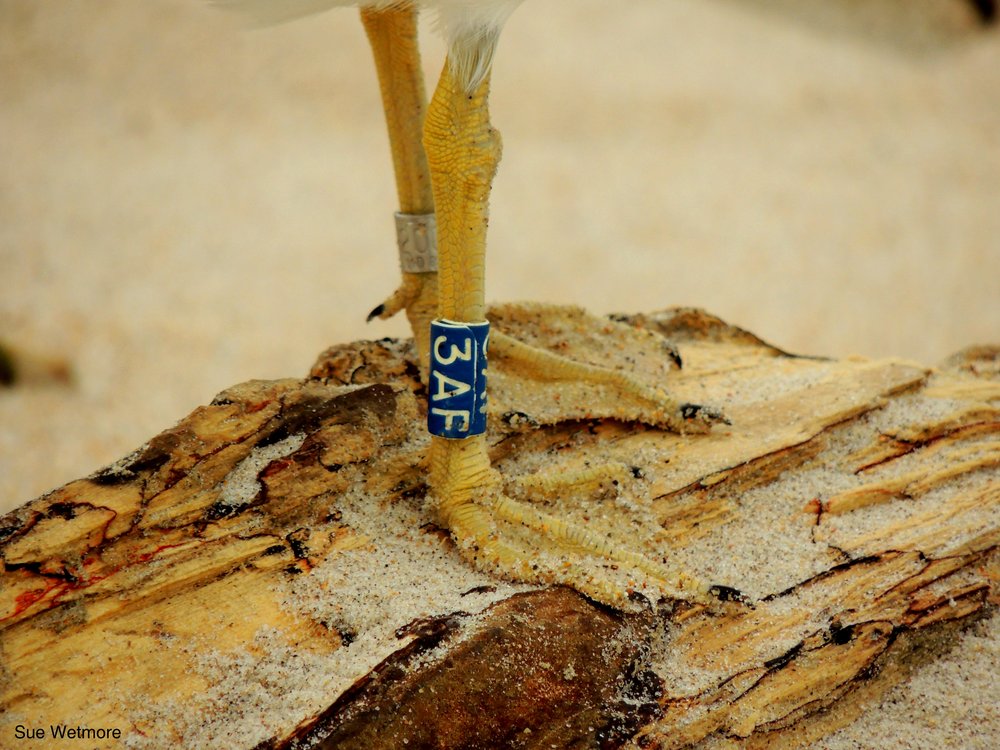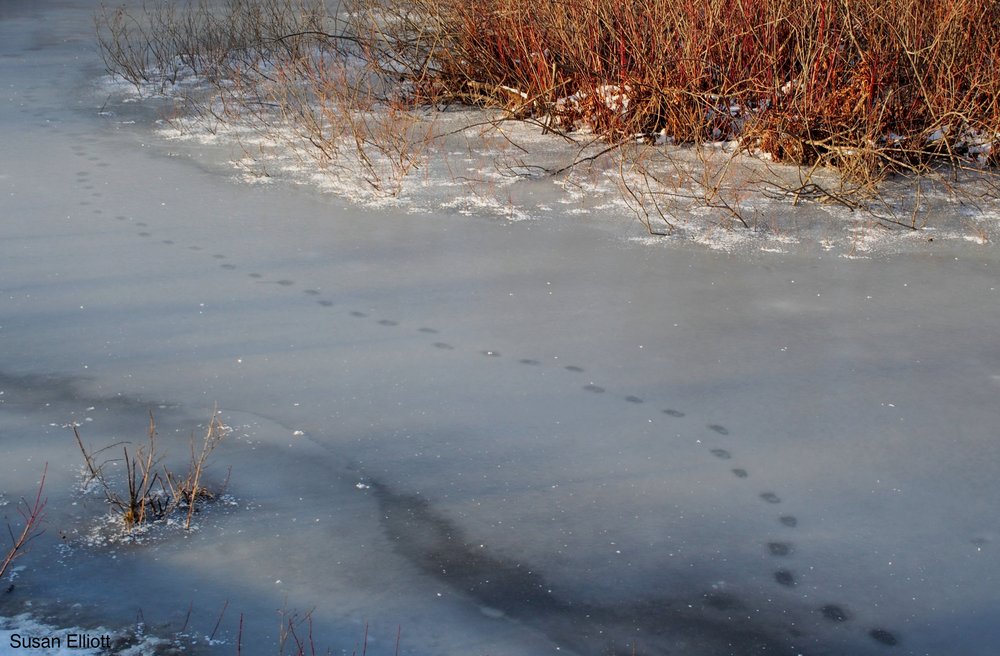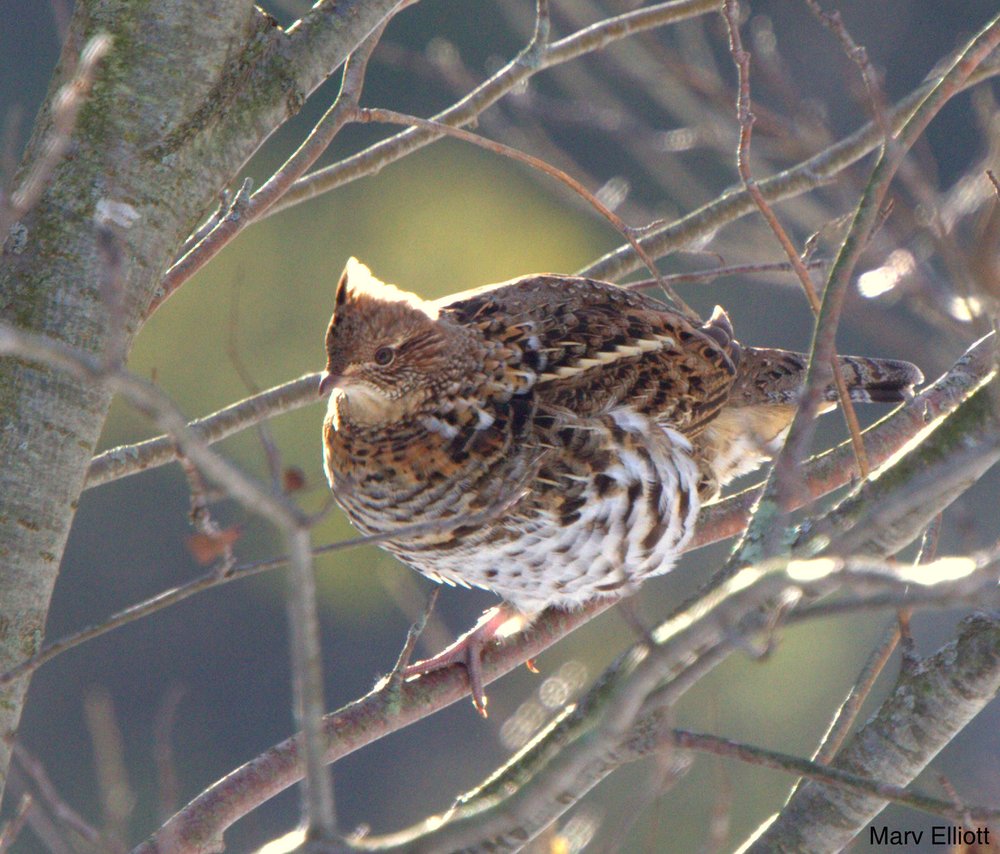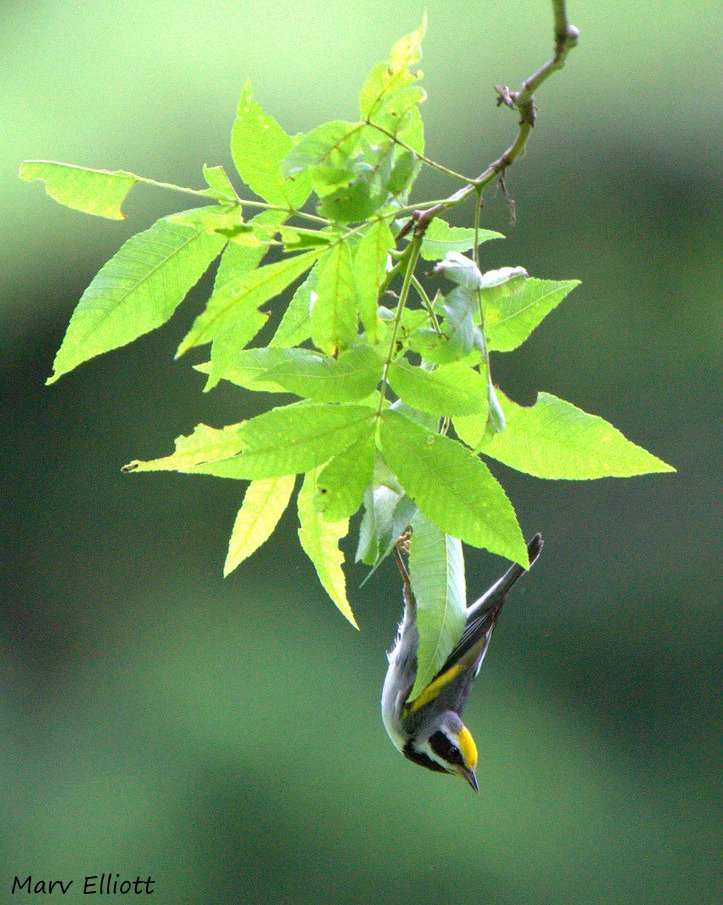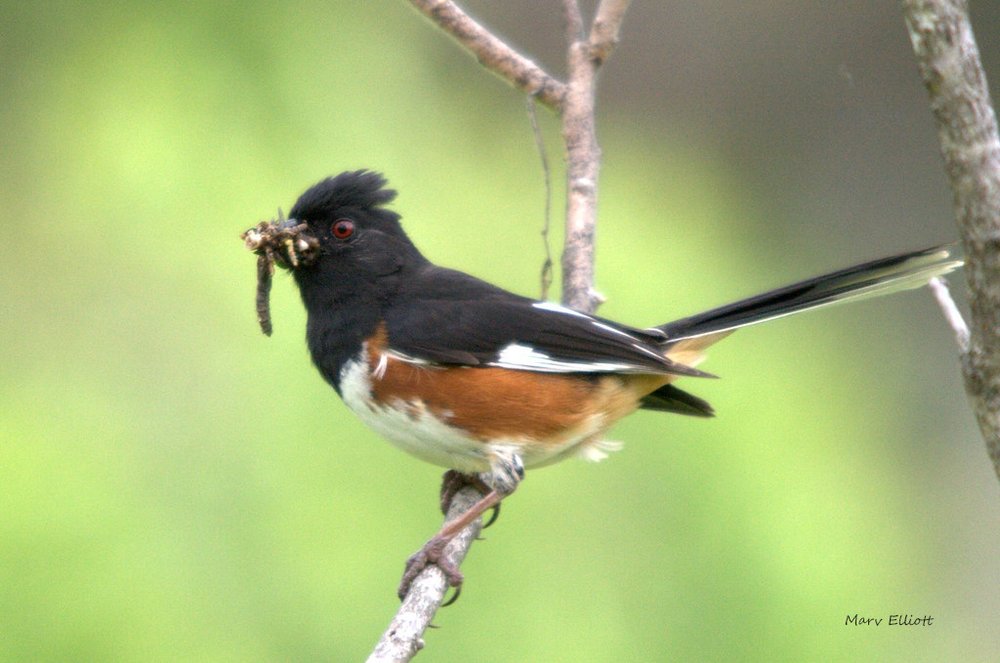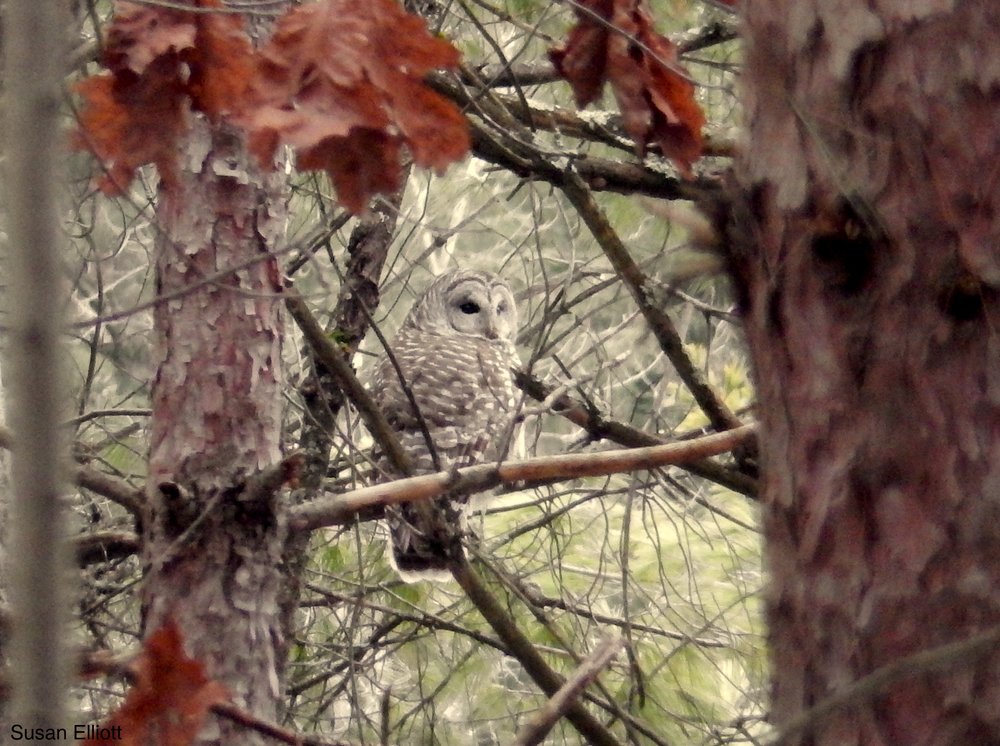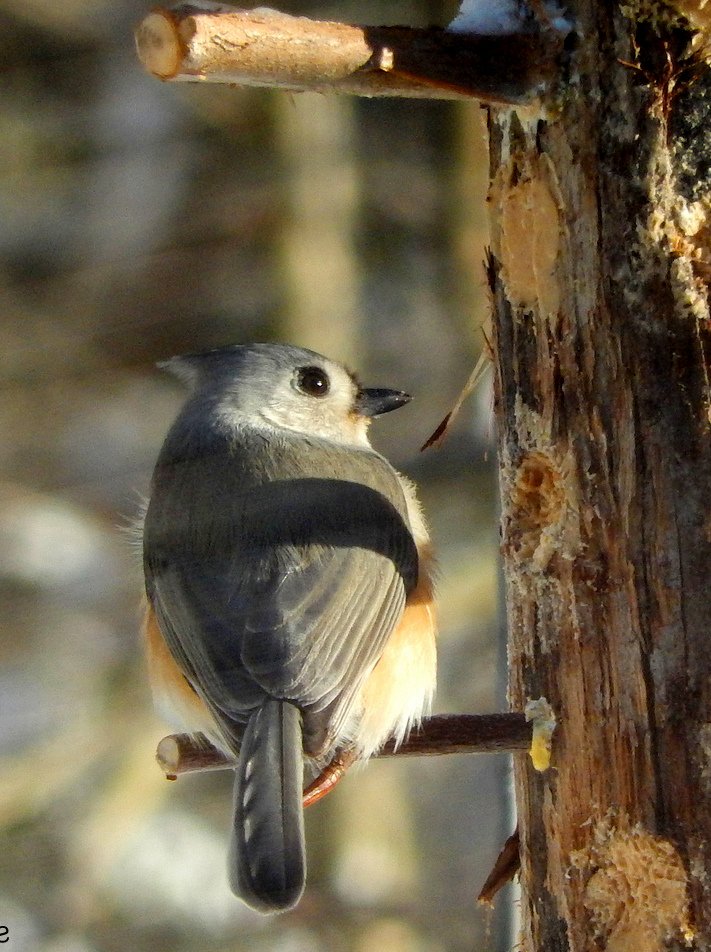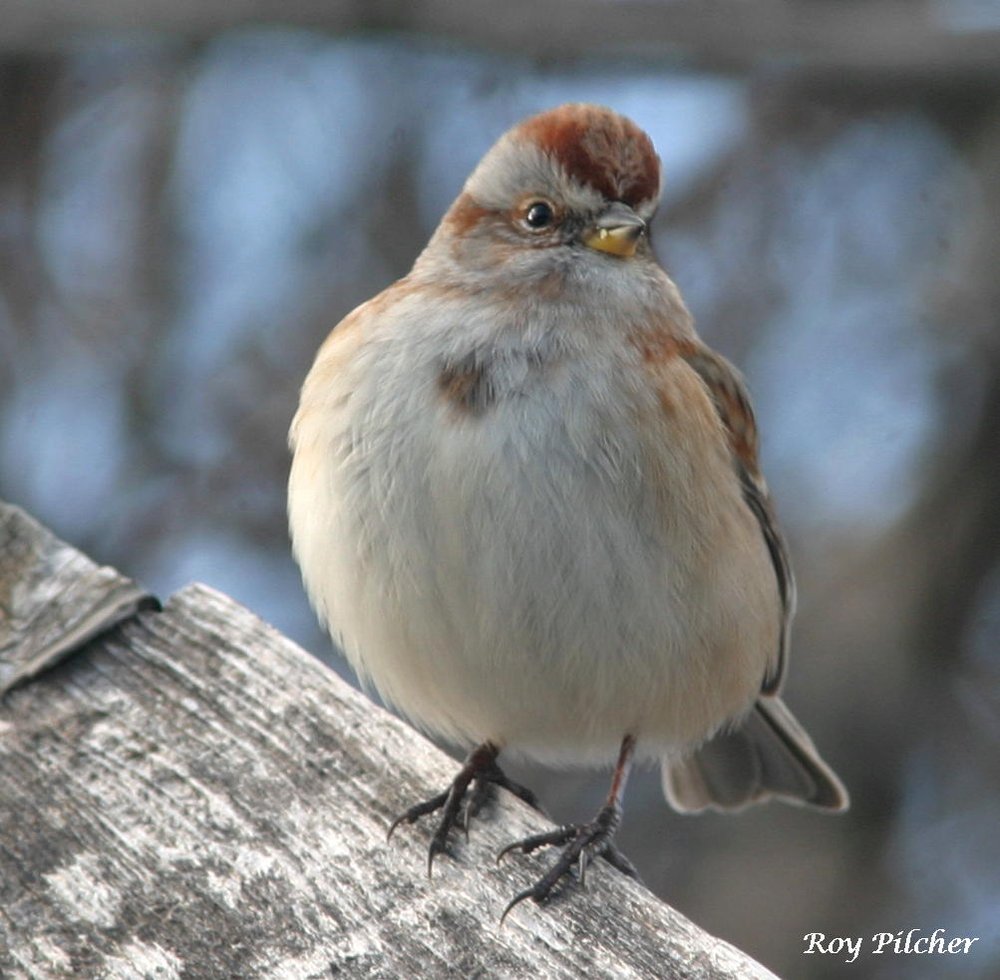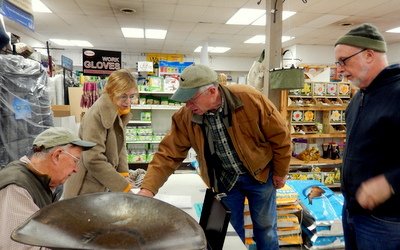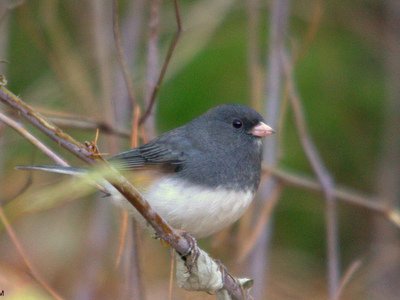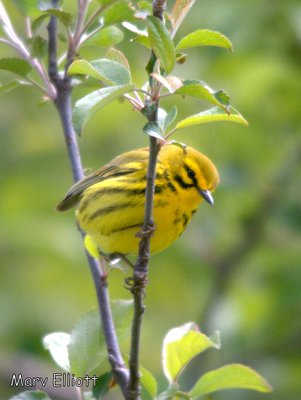In 1964, George T. LeBoutillier retired and, with his wife, went to live in Tinmouth. In A Natural History of Tinmouth, Vermont, he reflects upon his encounters with nature, both on his own property and over the wider Tinmouth region.
 a Tinmouth farmHe lays the groundwork with a bit of history. Tinmouth was founded in 1761 as a center of the iron smelting industry. Residual slag pits can still be seen near Tinmouth Channel. Farming, of course, was always present, but he remarks that even at that time, in the 1960s, it was clearly evident that many farms had vanished.
a Tinmouth farmHe lays the groundwork with a bit of history. Tinmouth was founded in 1761 as a center of the iron smelting industry. Residual slag pits can still be seen near Tinmouth Channel. Farming, of course, was always present, but he remarks that even at that time, in the 1960s, it was clearly evident that many farms had vanished.
A few pages of orientation elucidate the geography and geology. His hand-drawn map indicates the relationship of Tinmouth and Clark mountains, Tinmouth Pond and Channel, and The Purchase. The soil is generally neutral to alkaline as compared to the more acidic Green Mountains to the east. But the author points out that there are local variations based on the contribution of underlying rock (granite, limestone, or calcium).
This is followed by chapters on the flora, arthropods (including insects), reptiles and amphibians, mammals and birds. The book is not a field guide. Rather it is a compendium of LeBoutillier’s encounters with wildflowers, animals and birds as he actually experienced them. He does comment upon a few defining features, but prefers to draw the reader in with unique specimens he has comes across and unusual incidents likely to have been missed by those less attuned to their surroundings.
His overall philosophy on classification is exemplified by his declaring that, as an amateur, regarding spiders, he is content to get identification down to family or order; to go further would require catching, killing and dissection. Seeing a spider on the windowsill, he writes that “from its small size and the way it held its legs out at hits sides like a crab, I made a reasonable guess that it belongs to the group known as crab spiders….and decided to look no further as there are 200 species found in North American.” But his enlightenment was “Having found one yesterday, today I noticed four more.” Even more exciting was discovering an enormous wolf spider with 20-30 spiderlings on her back.
Viewing nature from ‘aloft’ so to speak, rather than down below, differentiating tiny details, he appreciates many generalities which are often overlooked in guidebooks, but would be useful to the novice. For example, he uses his own contour drawings to highlight distinctive anatomical features in swallowtail vs. skipper butterflies and also notes that fritillaries are distinguishable by their hairy forelegs (a point not sufficiently emphasized in the field guides I checked on).
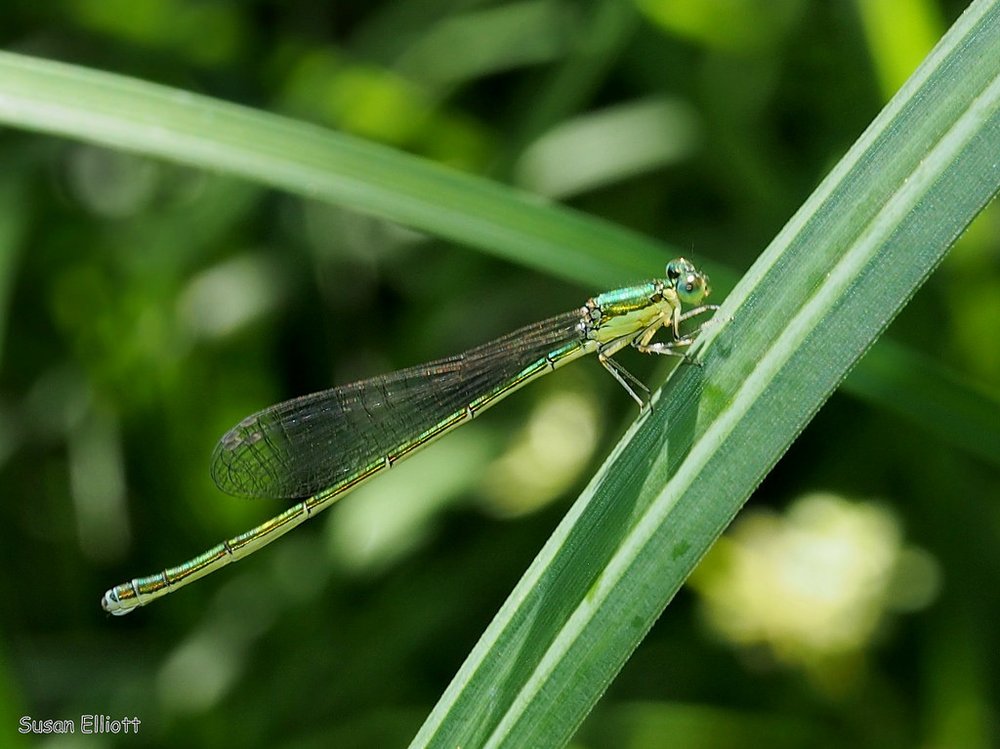 Sedge Sprite, Nehalennia irene, at Tinmouth Channel WMAInsects are often dismissed by us as repellent irritants, but LeBoutillier begs a closer look. He corrects a common misunderstanding by stating that “Only a few insects are ‘bugs’ and they belong to the order Heteroptera,” and he goes on to “useful, if not wholly accurate generalities: Beetles have a line straight down their backs. Bugs have a triangle on their backs. Flies have only one pair of wings. Bees and wasps have two pairs of wings, and the connection between their thorax and abdomen is a thick tubular membrane. Resting, moths either spread their wings vertically or move them up and down. Dragonflies rest with wings horizontal; damselflies rest with wings vertical.”
Sedge Sprite, Nehalennia irene, at Tinmouth Channel WMAInsects are often dismissed by us as repellent irritants, but LeBoutillier begs a closer look. He corrects a common misunderstanding by stating that “Only a few insects are ‘bugs’ and they belong to the order Heteroptera,” and he goes on to “useful, if not wholly accurate generalities: Beetles have a line straight down their backs. Bugs have a triangle on their backs. Flies have only one pair of wings. Bees and wasps have two pairs of wings, and the connection between their thorax and abdomen is a thick tubular membrane. Resting, moths either spread their wings vertically or move them up and down. Dragonflies rest with wings horizontal; damselflies rest with wings vertical.”
For those venturing out in spring hoping to see more than their own arms swatting at “no-see-ums” he offers the general rule, that at least 50 degrees F is necessary for insect activity. Apparently ticks were a moot point “if ticks are present here, we have not yet encountered any.”
Things “stirred-up” while mowing: various butterflies, bees, grasshoppers, leafhoppers, “a green larva that lands on my knee from somewhere,” flies beetles, chickadees, swallows, etc., are worth two pages of commentary. Akin to current concerns, already in 1983 he noted decreased bobolinks and eastern meadowlarks secondary to early mowing.
LeBoutillier also makes a point of watching, sitting still and observing. He spent time scrutinizing red-tailed bumblebees approach and depart a ground nest hole, as they maneuvered beneath an arched leaf entranceway. He spends hours watching wood frogs skittering on the surface of a long (was it combat or coupling?) diving or cackling. Frog croaks are not summarily dismissed, rather “the green frog fails hopelessly to achieve the sonority of the bull frog’s bass viol, but only the twang of a loose banjo string.” Of the gray tree frog: “a short trilling call…when two or three call antiphonally, in slightly different pitches, it is pleasant sound indeed.”
 White-tailed Deer, Odocoileus virginianusGray foxes, rabbits, mink, weasels, river otters, coyotes, bobcats and deer all traverse his property, and of these he makes keen observations and cogent conclusions. Mink sauntering by, even when searching for prey, have a more docile demeanor than the ferocious visage of the caged mink he has seen. The dexterity of apple-picking raccoons amazes him.
White-tailed Deer, Odocoileus virginianusGray foxes, rabbits, mink, weasels, river otters, coyotes, bobcats and deer all traverse his property, and of these he makes keen observations and cogent conclusions. Mink sauntering by, even when searching for prey, have a more docile demeanor than the ferocious visage of the caged mink he has seen. The dexterity of apple-picking raccoons amazes him.
Since winter-watching of animals is aided by one’s ability to decipher tracks, he offers a few tips to explain print patters: Raccoons and bears are plantigrade, walking on the sole of their foot with the heel touching the ground, whereas cats, dogs and deer are digitigrade, walking only on their toes, and thus are faster and more graceful. Walking birds, like crows, decisively put one foot ahead of the other, thus their prints are in a straight line, whereas birds that hop from place to place have footprints in pairs.
Birds are the last major chapter. Watching his feeders over time, he concludes that chickadees have an established hierarchy and behavioral etiquette. He “records” sparrow songs by depicting them as notes on a musical staff on paper. Using this he was able to trace individual sparrows who returned from year to year. He noticed that rough grouse would ascend off their nest with very turbulent strong wing beats which stirred up a flurry of dried leaves, to fall back and conceal the eggs.
The last thirty pages are selected journal entries.
I was struck by the author’s wealth of perceptions and impressions of his environment. LeBoutillier had his eyes wide open. But he wasn’t just passively watching it scroll past before him. He also went out with questions, and looking for answers leads him to see more incisively.
Without his expressly saying so, I think his ultimate message, is first to strive to be well-acquainted with your surroundings. Knowing at least the basics of geology and geography will help you understand and appreciate the inhabitants of your environment. Being familiar with the fundamentals, you will be receptive to variations, and that will enhance your knowledge and understanding. Be “mindful” of the world around you. Lastly adopt a “look it up now” resolution. An ongoing journal would be exemplary, but it is helpful to just jot down what you saw, where, time of day, description or even crude drawings. Having something documented serves as a quick reference to jog your memory. You will be motivated to resolve questions by looking something up. And with your notes, future sightings will be more reliably compared to the past.
This book is no longer in publication. I checked with “The Bookmobile” in downtown Rutland and they said they could probably locate used copies. A Natural History of Tinmouth, Vermont is also available at the Rutland Free Library.
 Wild TurkeysDespite the light snow and the temperature at a superfluous one degree, no wind made it an almost pleasant day for the 163rd monthly monitoring walk around West Rutland Marsh. Six participants tallied 20 species, two fewer than February 2014, but above the average of 18 for this month of the year.
Wild TurkeysDespite the light snow and the temperature at a superfluous one degree, no wind made it an almost pleasant day for the 163rd monthly monitoring walk around West Rutland Marsh. Six participants tallied 20 species, two fewer than February 2014, but above the average of 18 for this month of the year. A Common Raven was making popping sounds from one of the power poles that cross the marsh.
A Common Raven was making popping sounds from one of the power poles that cross the marsh.

